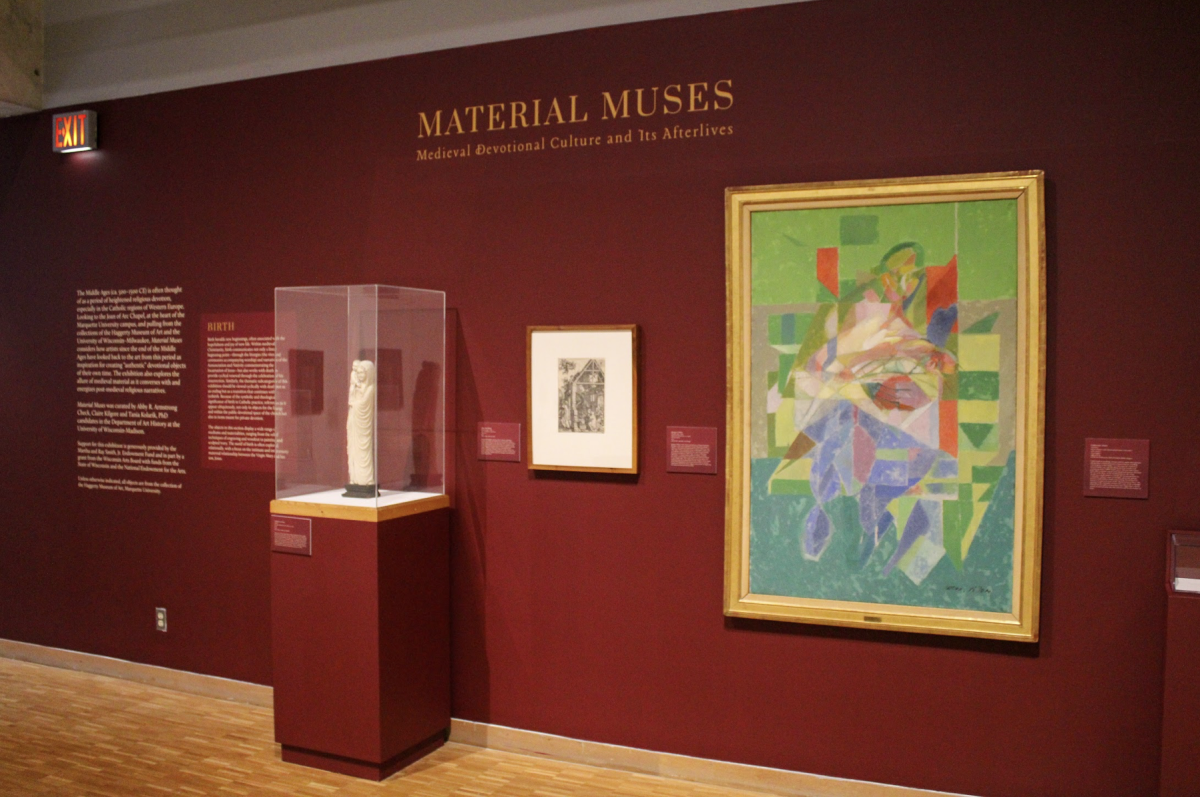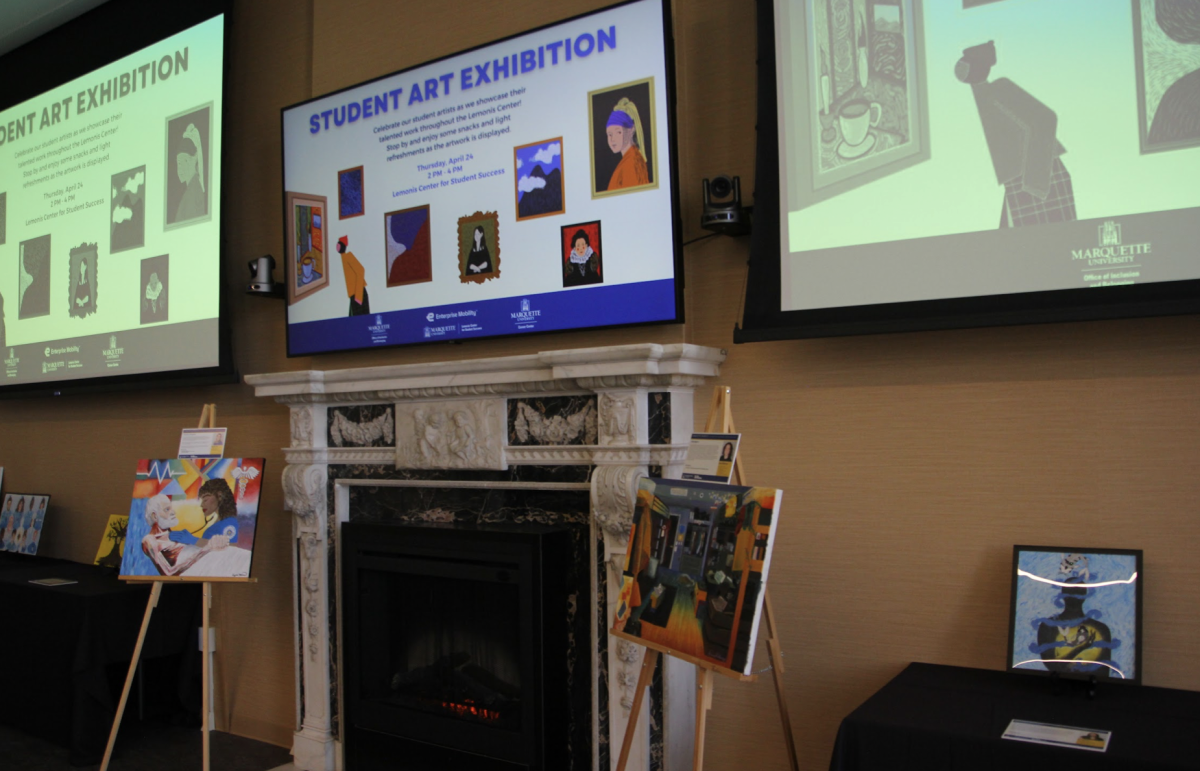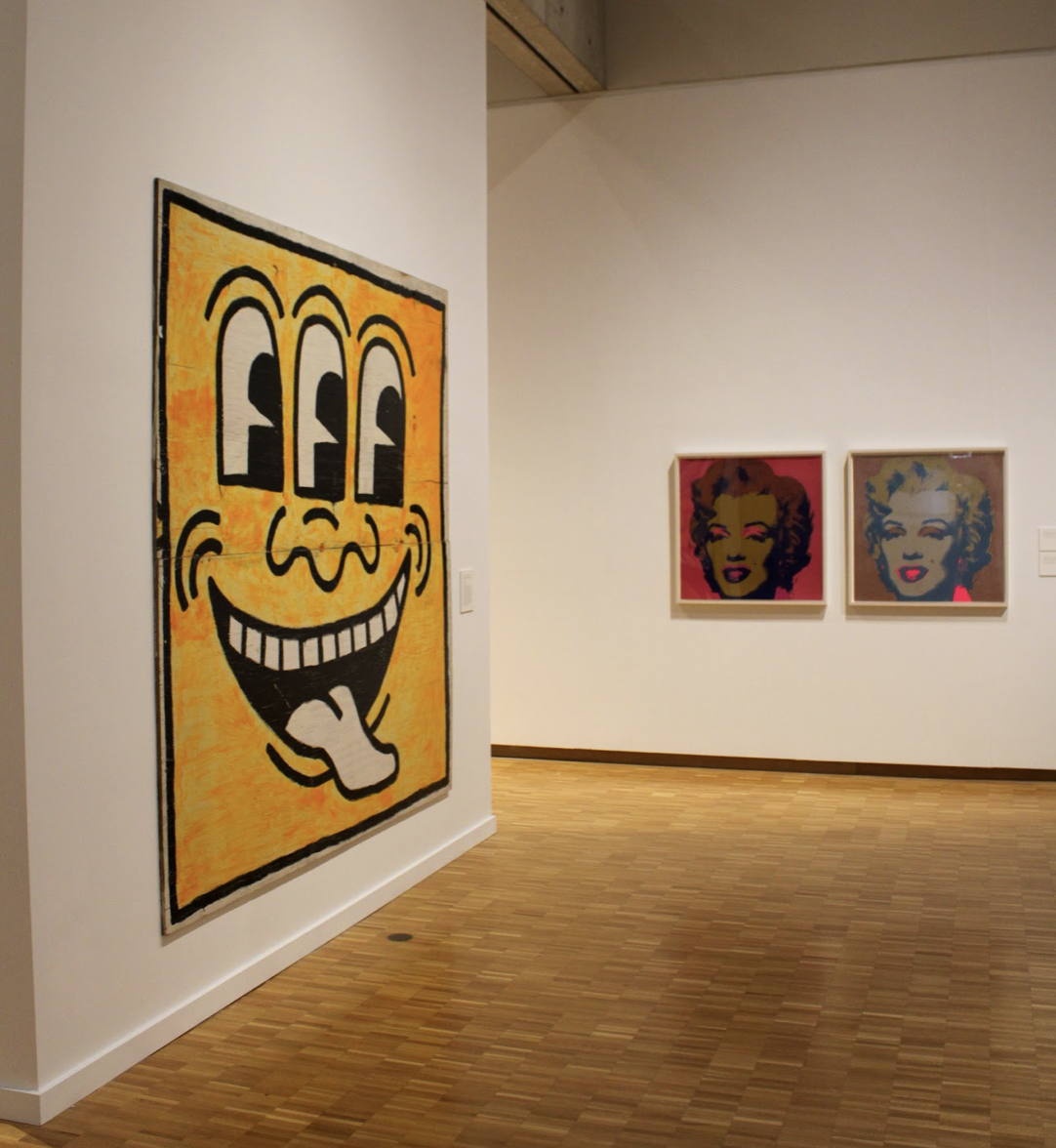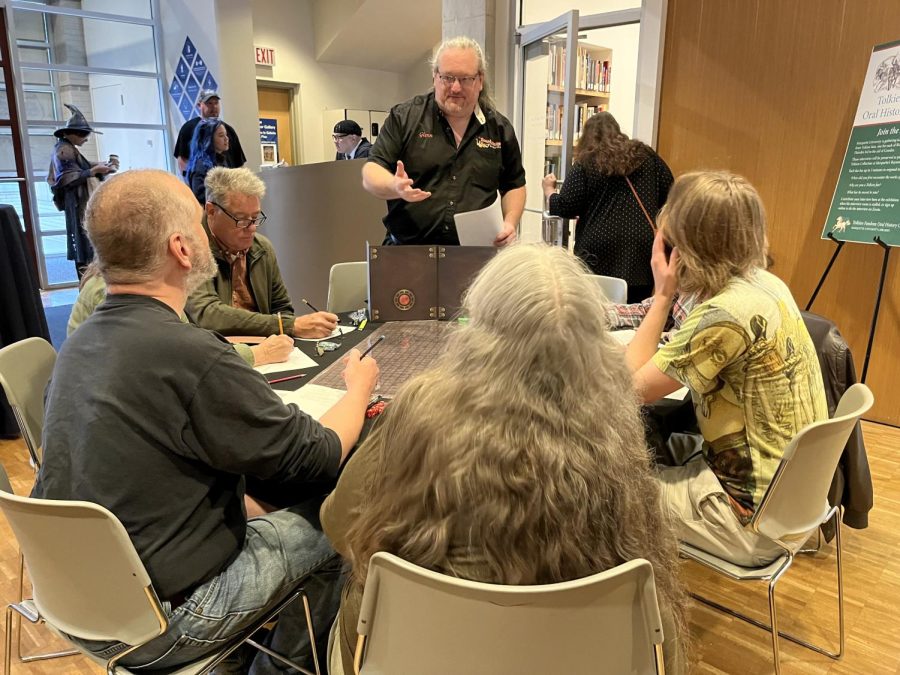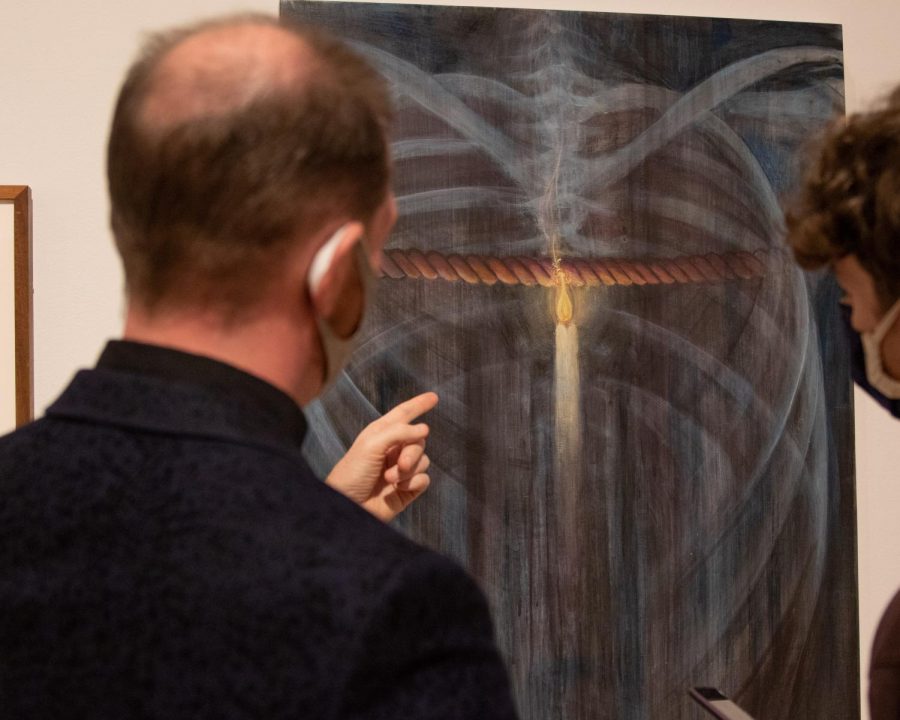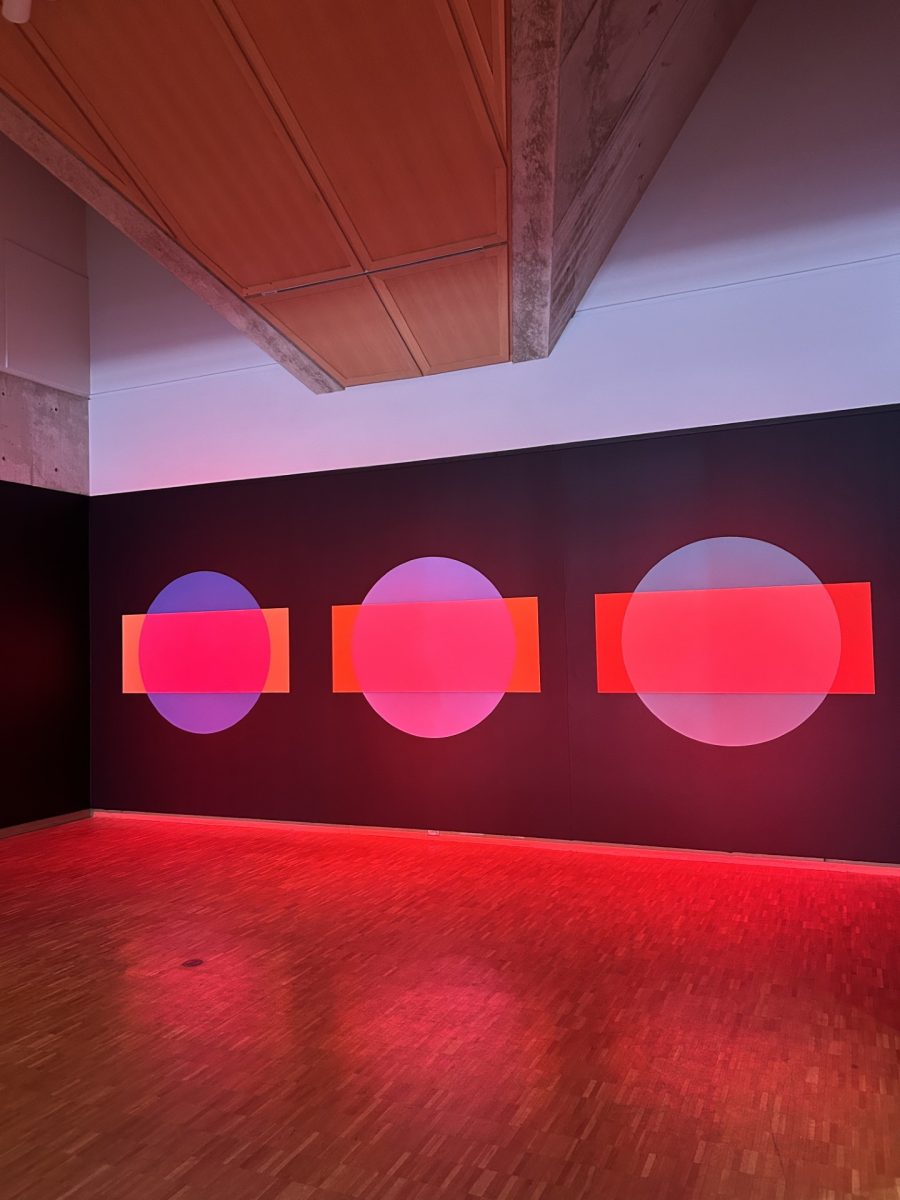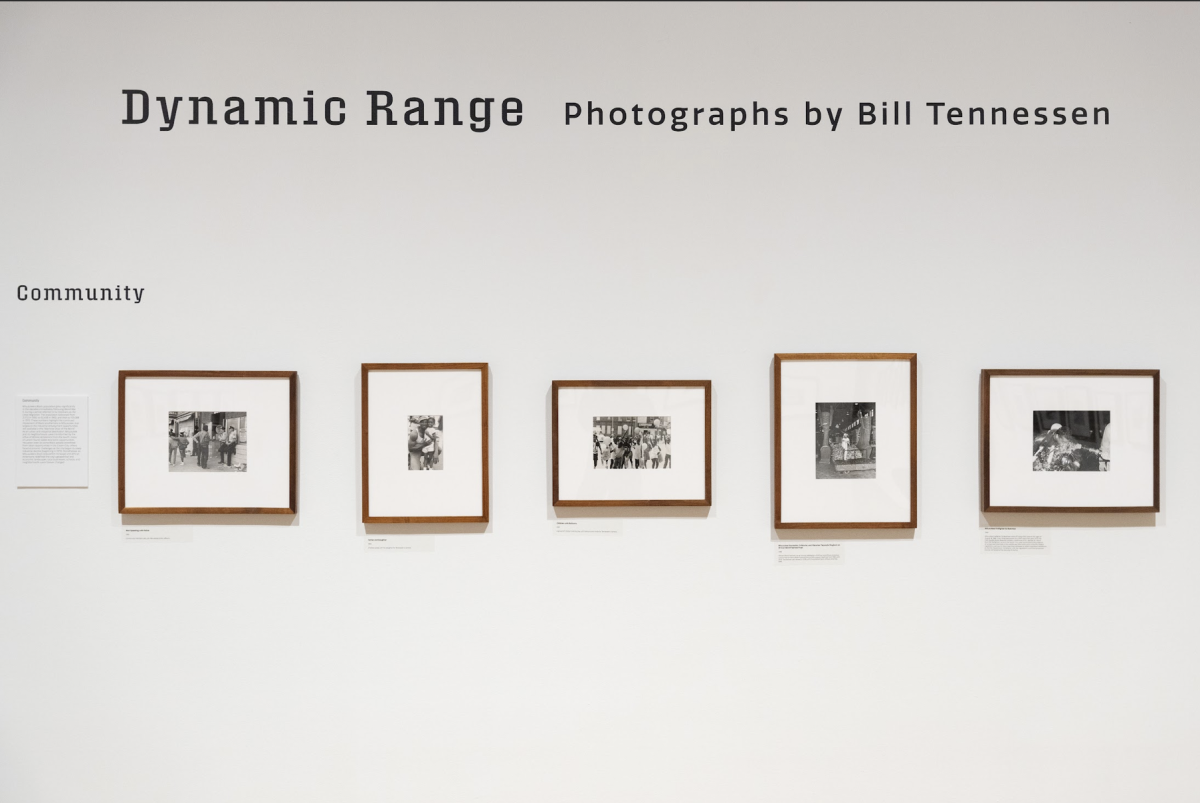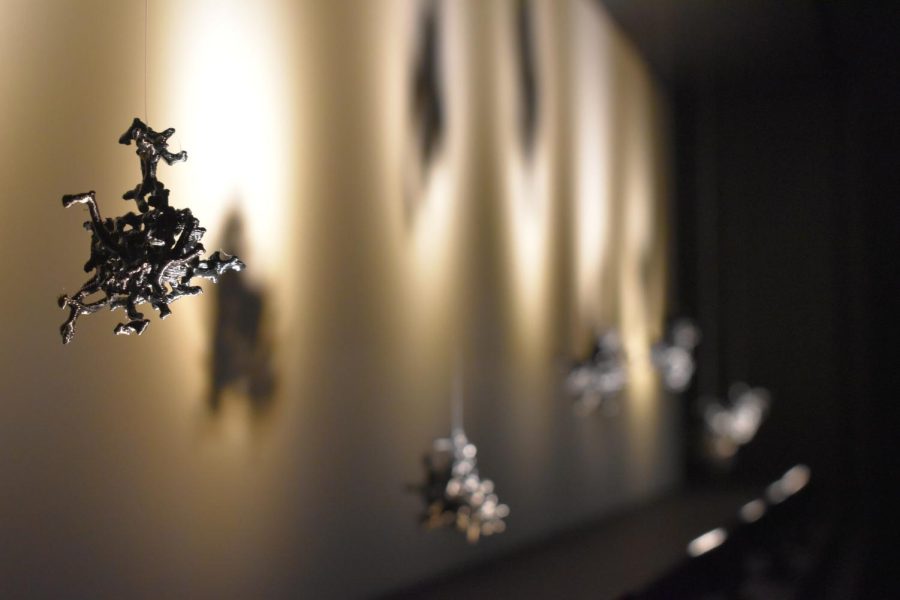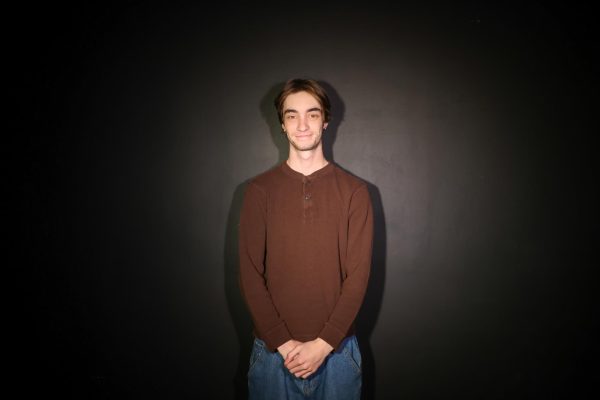The Haggerty Museum of Art is presenting a new exhibition, “Material Muses: Medieval Devotional Culture and its Afterlives,” showcasing how medieval religious art continues to resonate in contemporary times.
The exhibition, which opened on Aug. 23 and will be on display until Dec. 21, brings together a collection of artifacts that explore the enduring influence of medieval styles on modern religious artwork and expression.
The exhibit features religious objects from the collections of Marquette University’s Joan of Arc Chapel, the Haggerty Museum itself and the University of Wisconsin–Milwaukee. It highlights how, over centuries, artists and worshippers have looked back to the medieval period for both religious and artistic guidance, hoping to lend a sense of historical “authenticity” to their own religious practices.
Many of the items on display serve as symbols of devotion, focusing on key themes such as birth, death and ritual, inviting visitors to consider how these acts of faith connect the past to the present.
The exhibit was brought to life by three PhD candidates from the University of Wisconsin-Madison’s Art History department: Abby Armstrong, Claire Kilgore and Tania Kolarik.
Armstrong said they work closely with Lynne Shumow, the curator for academic engagement at the Haggerty, to curate the exhibit.
“We strove to pick items (that showed how) artists since the end of the Middle Ages have looked back to the art from this period as inspiration for creating “authentic” devotional objects of their own time…We wanted to explore how these objects were relevant and used at the time of their creation and how they galvanize post-medieval religious narratives,” Armstrong said.
For the curators, the Middle Ages serve as a creative “muse,” providing a foundation that continues to influence devotional storytelling today.
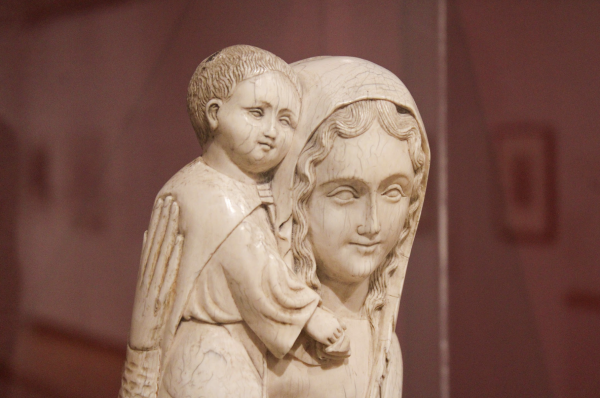
Armstrong said as medievalists, they were especially excited to highlight how people use medieval designs and materials to create authenticity in their own religious practices.
“We are always thinking about ways to remind the public at large that the Middle Ages are still relevant and lasting today. In this exhibition, which also happens to take place at a Jesuit university, we already knew that religious themes would be familiar and welcoming to the Marquette audience,” Armstrong said.
When piecing together the exhibit, Shumow guided the students through their first curation experience, helping them select pieces with specific liturgical significance. Shumow said that the objects selected for the exhibition were chosen for their ties to key rituals of devotion, life and death.
“As an academic institution it works with our mission to collaborate and work with PHD candidates, [for this exhibit] focused on tactiles, anything with a great deal of artistry. [We also] wanted to highlight objects that had specific liturgical purposes,” Shumow said.
Shumow added this testament becomes apparent when entering the exhibit.
The show is filled with a broad selection of religious pieces from different eras. At the exhibit’s center stands a stole from the Joan of Arc Chapel, a centuries–old, ivory statue is placed between two paintings, one modern and one old. An archaic goatskin-bound book lies next to a comedic sculpture of Jesus’s followers. A full display of art driven by the inspiration of medieval times.
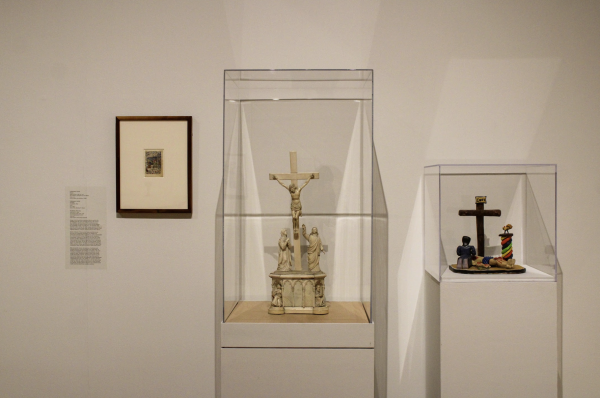
But for Marquette, Material Muses goes beyond art history; it serves as a connection to the institution’s spiritual mission. The exhibit provides Marquette students and visitors with a space to explore how religious art creates spiritual reflection across eras.
Students can continue to view the exhibit for free until Dec. 21.
This story was written by Allison Scherquist. She can be reached at allison.sherquist@marquette.edu.


